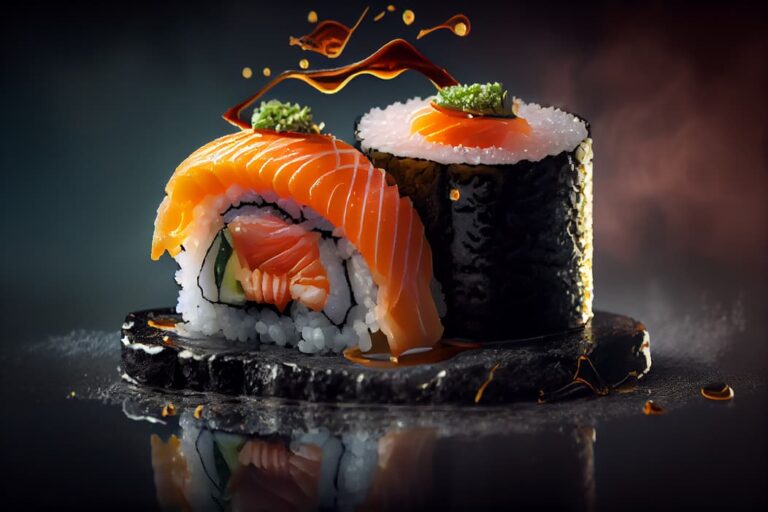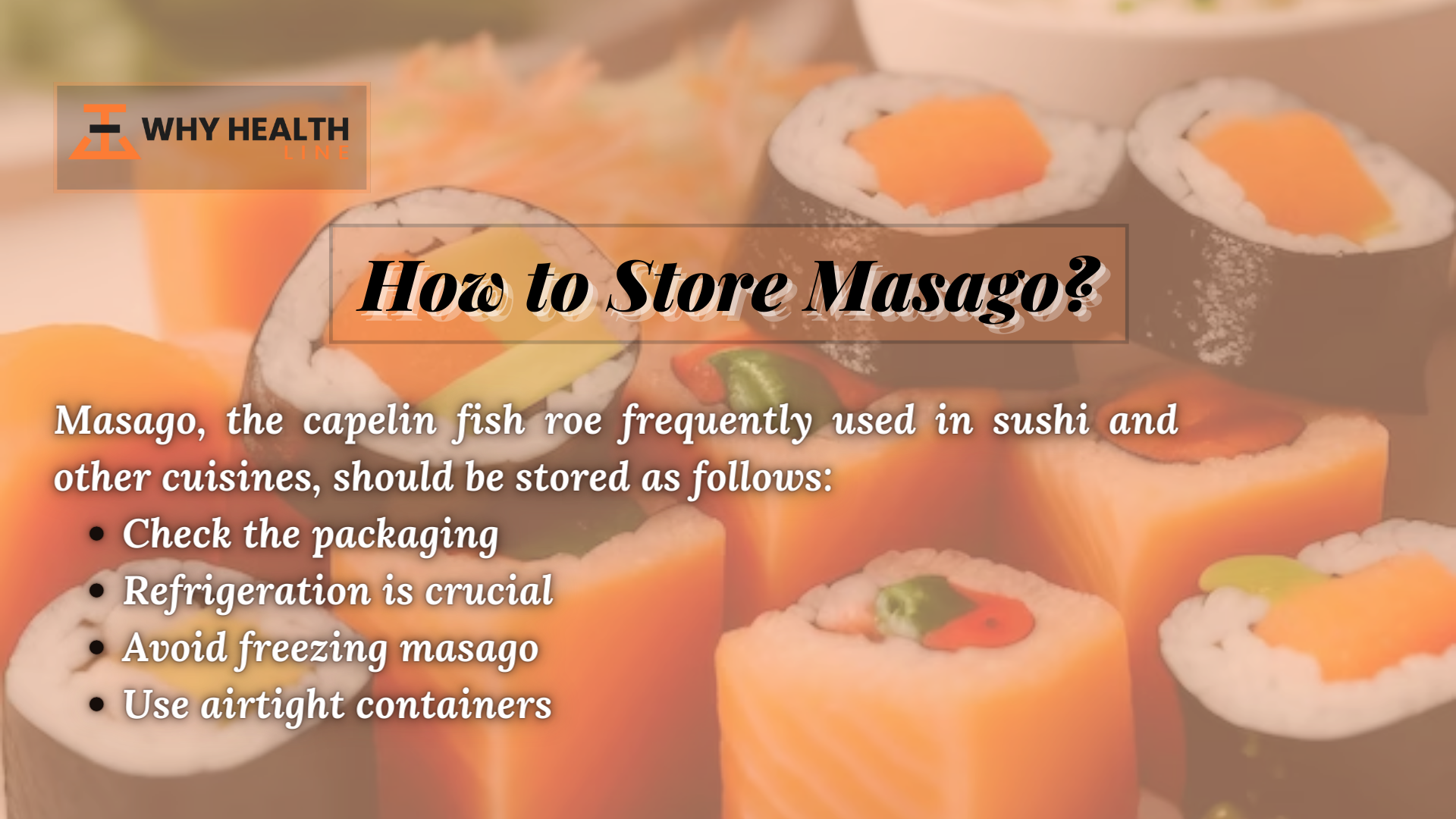
Masago, also known as capelin roe, has gained significant popularity around the globe and is usually used as a substitute for Tobiko in various Asian cuisines.
It is the ripened egg of the capelin fish that is found in the world’s cold-water regions, mostly in the Atlantic and North Pacific oceans. Masago is not only a delicious ingredient, but it also provides lots of health benefits.
It is rich in high-quality protein, essential nutrients, and minerals. In addition to that, it is also a great source of omega-3 fatty acids, vitamin B12, and vitamin D.
Apart from its extensive nutrient profile, Masago is famous for its unique taste and can be added to a number of recipes. However, people most commonly use it in sushi preparation.
Ready to know what else this delicious ingredient has to offer? Let’s take a look at the health benefits and potential risks of Masago and how you can add it to your diet.
Nutrition Facts
Masago is relatively low in carbs and a significant source of essential nutrients and proteins. It is also rich in vitamin B12, a nutrient required by the body’s cells for metabolism.
A deficiency in vitamin B12 can affect the body’s ability to absorb nutrients, make new blood cells, and sometimes even lead to anemia.
A 28-gram serving of masago typically contains:
- 40 calories
- 6 grams of protein
- 2 grams of fat
- 0 grams of carbohydrates
- 0 grams of fiber
- 0 grams of sugar
- 47% of vitamin B12
- 11% of Phosphorus
Risks and Side Effects
Masago does not have any inherent side effects, but certain allergies to fish roe are somewhat common. Excessive consumption of fish eggs can also affect your heart health because they contain a lot of cholesterol.
Furthermore, masago is high in sodium. Foods that are high in sodium have been associated with exerting many negative effects on health, so be sure to keep your intake in moderation if you already have kidney issues or high blood pressure.
How to Use (Recipes)
If you’ve decided to add this delicious ingredient to your diet, there are so many tasty options that you can choose from. Its distinctive texture and flavor make it an excellent addition to a variety of Asian dishes.
Some popular Masago recipe ideas generally include:
- Adding it as a topping to make Masago sushi rolls
- Creating Masago sauce by adding ingredients like wasabi and soy sauce
- Creating a scrumptious appetizer of Masago by adding fruits and cheese
- Adding Masago to noodles recipes
- Enjoying Masago with sushi rice

What Does Masago Look Like?
Masago is a type of ripened fish egg that, in its original state, is typically pale yellow in color. But it’s often dyed in different colors, most commonly in red, orange, or even green, to make it visually appealing. Masago is a prevalent choice of ingredient for a variety of food recipes.
How to Add It to Your Diet
2 tablespoons of masago provide almost 6 grams of protein, making it an excellent addition to your diet, with a wide range of potential health benefits.
Masago is most commonly seen on the outer covering of sushi rolls. In addition to being used as a decoration for sushi rolls, this ingredient is also combined with different sauces and side dishes to create some additional crunch.
Is Masago Good for You? (Potential Benefits)
With its extensive nutrient profile, masago has a wide range of health benefits. It is rich in essential vitamins and nutrients that protect heart health, boost the immune system, prevent weight gain, and lower oxidative stress.
Plus, the omega-3 fatty acids in masago help the body in the production of the hormones needed to control blood clotting and prevent inflammation. Researchers have also found that people who eat more omega-3 fats have better eye health.
Tobiko Vs. Masago
Masago eggs are quite similar to Tobiko but are much smaller and far less expensive. This makes it a very popular alternative for Tobiko, particularly in sushi rolls.
Both are fish roe; however, Masago is capelin roe, and Tobiko is flying fish roe. Masago is also slightly dull in color, whereas Tobiko is brighter and has more flavor.
Masago shares a somewhat similar taste to tobiko, but it’s not that crunchy. The major difference between them is that masago is way cheaper, and many restaurants use masago as a substitute for Tobiko, as they look fairly similar.
What Is Masago and What Does It Taste Like?
FAQs:
What Is Masago Sauce Made Of?
Masago sauce is made from a creamy blend of lime juice, mayonnaise, roe, and sriracha. It is the perfect additive to serve with many kinds of seafood, such as sushi and shrimp.
Is Masago Actually Fish Eggs?
Masago is actually a mature egg of the capelin fish. It is a type of foraging fish generally found in the North Pacific and North Atlantic regions.
Does Masago Taste Like Caviar?
Masago is quite similar in appearance and taste to Caviar and Tobiko; that’s why it is a great substitute. However, it does not provide the same sensation as Caviar when a person eats it, as it is less crunchy and it tends to be more bitter.
Therefore, it is typically used as a garnish rather than the focus of a meal.